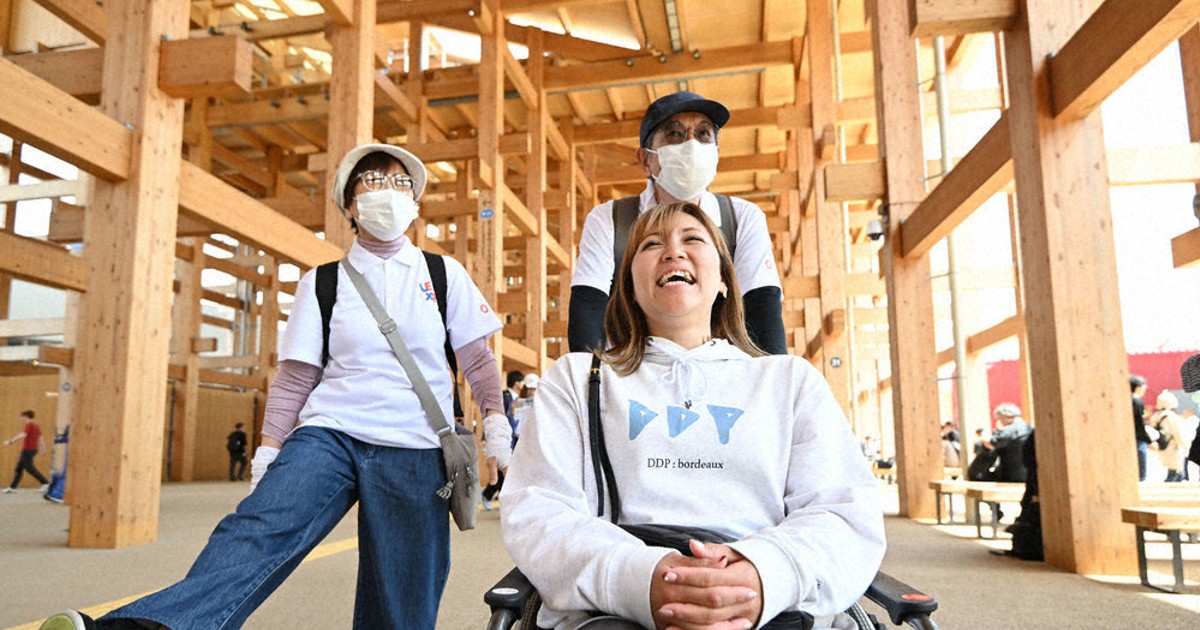EXPO for All: Welcoming Wheelchair Users with Smiles – A New Era of Accessibility
Introduction: For too long, expos and large-scale events have presented significant accessibility challenges for wheelchair users. Navigating crowded spaces, accessing information, and simply feeling included can be a struggle. But a growing number of organizers are recognizing the importance of creating truly inclusive experiences. This article explores the exciting shift towards welcoming wheelchair users with open arms, focusing on innovative solutions and best practices showcased at events like [mention a specific example, if possible, linking to their website]. We'll delve into what makes an expo truly accessible and examine the positive impact on both attendees and organizers.
Breaking Down Barriers: Key Features of an Accessible EXPO
Creating an inclusive environment for wheelchair users requires a multifaceted approach. It's not just about ramps; it's about a fundamental shift in design philosophy and event planning. Here are some key elements:
1. Accessible Venue Selection and Design:
- Wide pathways and ramps: Sufficient space is crucial for easy navigation, especially during peak hours. Steep ramps should be avoided, and clear signage indicating accessible routes is essential.
- Accessible entrances and restrooms: Entrances should be wide enough to accommodate wheelchairs, and restrooms must adhere to accessibility standards.
- Lift access: Multi-story venues require reliable and easily accessible lifts, clearly marked and easy to find.
- Designated seating areas: Strategically located seating areas provide resting points and ensure wheelchair users can comfortably participate in presentations and events.
2. Information Accessibility:
- Clear and accessible signage: Signage should be large, clear, and easy to read from a seated position. Braille and large-print options are highly recommended.
- Accessible website and mobile app: The event website and any associated mobile app must be fully accessible, compliant with WCAG (Web Content Accessibility Guidelines).
- Alternative formats for information: Offer event information in accessible formats such as audio descriptions, large print, and Braille upon request.
3. Staff Training and Support:
- Awareness and sensitivity training: Staff should receive training on interacting respectfully with wheelchair users and understanding their individual needs.
- Dedicated accessibility staff: Having designated staff members available to assist wheelchair users can significantly improve the overall experience.
- Emergency procedures: Clear and accessible emergency procedures should be in place, ensuring the safety of all attendees, especially those with mobility limitations.
The Benefits of Accessibility: More Than Just Compliance
While compliance with accessibility regulations is essential, the benefits extend far beyond legal requirements. An accessible expo fosters:
- Increased attendance and engagement: By welcoming wheelchair users, organizers tap into a broader audience, enhancing both attendance and overall engagement.
- Positive brand image and reputation: Demonstrating a commitment to inclusivity enhances brand reputation and strengthens customer loyalty.
- A richer and more diverse experience: Accessibility creates a more welcoming and inclusive environment for everyone, enriching the overall experience for all attendees.
Moving Forward: A Call to Action
The shift towards truly accessible expos is gaining momentum, fueled by a growing awareness of the importance of inclusivity. Organizers, event planners, and venue managers have a responsibility to ensure that events are welcoming and accessible to all. By prioritizing accessibility, we create spaces where everyone can participate, connect, and thrive.
Let's make every expo an expo for all!
(Include relevant links to accessibility guidelines, resources for event planners, and examples of accessible expos.)
